Jimmy Hoffa was a prominent American labor union leader, most notably serving as president of the International Brotherhood of Teamsters (IBT) from 1957 to 1971. His leadership was controversial due to alleged connections to organized crime. Hoffa mysteriously disappeared in 1975, and despite extensive investigations, his fate remains unknown, contributing to his enduring notoriety.
1903: Teamsters Founded
In 1903, the Teamsters were founded and had 75,000 members in 1933.
1907: Tobin President
In 1907, Daniel J. Tobin was president.
1920: Death of Hoffa's Father
In 1920, Hoffa's father died from lung disease when Hoffa was seven years old.
1924: Hoffa Family Moves to Detroit
In 1924, the Hoffa family relocated to Detroit, where Hoffa spent the remainder of his life.
1932: Hoffa Leaves Grocery Chain
In 1932, Hoffa left the grocery chain due to his union activities and was invited to become an organizer with Local 299 of the Teamsters in Detroit.
1933: Hoffa Recruits New Union Members
Between 1933 and 1935, Hoffa actively recruited new members to the union.
1933: Teamsters Membership
In 1933, The Teamsters had 75,000 members.
1935: Hoffa Recruits New Union Members
Between 1933 and 1935, Hoffa actively recruited new members to the union.
September 25, 1936: Hoffa Marries Josephine Poszywak
On September 25, 1936, Jimmy Hoffa married Josephine Poszywak in Bowling Green, Ohio.
1936: Teamsters Membership Grows
By 1936, Teamsters membership grew to 170,000 members as a result of Hoffa's work with other union leaders.
December 1946: Hoffa Becomes President of Local 299
In December 1946, Hoffa became president of Local 299, despite never having worked as a truck driver.
1951: Teamsters Membership Tops a Million
By 1951, the number of teamsters had grown steadily during World War II and in the postwar boom to eventually top a million members.
1952: Hoffa Selected as National Vice-President
At the 1952 IBT convention in Los Angeles, Hoffa was selected as national vice-president by incoming president Dave Beck.
1952: Hoffa Elected Vice-President
Following his 1952 election as vice-president, Hoffa began spending more of his time away from Detroit.
1952: Hoffa Becomes National Vice-President of IBT
In 1952, Hoffa was appointed as the national vice-president of the International Brotherhood of Teamsters (IBT), ascending to a prominent leadership role within the organization.
1952: Marvin Elkind Assigned as Hoffa's Chauffeur
In 1952, Marvin Elkind, a petty criminal, was assigned by gangster Anthony Salerno to work as Hoffa's chauffeur.
1955: IBT Moves Headquarters
In 1955, the IBT relocated its headquarters from Indianapolis to Washington, D.C., marking a significant shift in the union's operations and influence.
March 14, 1957: Hoffa Arrested for Alleged Bribery
On March 14, 1957, Hoffa was arrested for allegedly trying to bribe an aide to the Select Committee.
March 1957: Beck Appears Before Senate Committee
In March 1957, Beck, Hoffa's predecessor, appeared before the John L. McClellan-led US Senate Select Committee on Improper Activities in Labor or Management Field and took the Fifth Amendment 140 times.
1957: Hoffa Becomes President of IBT
In 1957, Jimmy Hoffa assumed the presidency of the International Brotherhood of Teamsters (IBT), marking a significant milestone in his career.
1957: IBT Expelled from AFL-CIO
In 1957, at the AFL-CIO convention, union members voted to expel the IBT due to Hoffa's alleged corrupt leadership.
August 3, 1958: Associate Sets Himself on Fire
On the night of August 3, 1958, Frank Kierdorf accidentally set himself on fire.
1960: Teamsters Endorsed Nixon
In 1960, the Teamsters endorsed Nixon. In prior elections, the union had normally supported Democratic nominees.
1960: Kennedy Elected President
When John F. Kennedy was elected president in 1960, he appointed his younger brother Robert as Attorney General.
1961: Hoffa Re-elected as President
Following his re-election as president in 1961, Hoffa worked to expand the union.
1961: Robert Kennedy Appointed Attorney General
Robert Kennedy was appointed as Attorney General in 1961 and he pursued a strong attack on organized crime and he carried on with a so-called "Get Hoffa" squad of prosecutors and investigators.
December 5, 1962: Hoffa Attacked During Court Hearing
On December 5, 1962, during a court hearing, Warren Swanson fired several pellets at Hoffa, who retaliated by punching Swanson.
1962: Hoffa Conspiracy Trial
In 1962, Hoffa had a conspiracy trial in Nashville.
May 1963: Hoffa Indicted for Jury Tampering
In May 1963, Hoffa was indicted for jury tampering in Tennessee, charged with the attempted bribery of a grand juror during his 1962 conspiracy trial in Nashville.
March 4, 1964: Hoffa Convicted of Jury Tampering
On March 4, 1964, Hoffa was convicted of jury tampering and sentenced to eight years in prison and a $10,000 fine.
July 26, 1964: Hoffa Convicted of Conspiracy and Fraud
On July 26, 1964, Hoffa was convicted in a second trial held in Chicago, on one count of conspiracy and three counts of mail and wire fraud for improper use of the Teamsters' pension fund, and sentenced to five years in prison.
1964: Hoffa Convicted
Hoffa spent the next three years unsuccessfully appealing his 1964 convictions.
1964: Hoffa Secures National Master Freight Agreement
In 1964, Hoffa achieved a significant victory by securing the first National Master Freight Agreement for the Teamsters, a landmark achievement in labor negotiations.
1964: National Master Freight Agreement
In 1964, Hoffa brought virtually all over-the-road truck drivers in North America under a single National Master Freight Agreement.
1964: Hoffa Convicted of Multiple Charges
In 1964, Jimmy Hoffa was convicted on charges including jury tampering, attempted bribery, conspiracy, mail fraud and wire fraud across two separate trials.
1966: Hoffa Re-elected IBT President
In 1966, Hoffa was re-elected without opposition to a third five-year term as president of the IBT.
March 7, 1967: Hoffa Begins Prison Sentence
On March 7, 1967, Hoffa began serving his aggregate prison sentence of 13 years (eight years for bribery, five years for fraud) at the Lewisburg Federal Penitentiary in Pennsylvania.
1967: Hoffa Imprisoned
In 1967, Hoffa was imprisoned after being sentenced to 13 years for his convictions.
1967: Fitzsimmons Named Acting President
In 1967, when Hoffa entered prison, Frank Fitzsimmons was named acting president of the union.
1970: Publication of "The Trials of Jimmy Hoffa"
In 1970, Hoffa published his book "The Trials of Jimmy Hoffa".
June 19, 1971: Hoffa Resigns as Teamsters President
On June 19, 1971, while still in prison, Hoffa formally resigned as Teamsters president, relinquishing his leadership position within the union.
July 9, 1971: Fitzsimmons Elected Teamsters President
On July 9, 1971, Fitzsimmons was elected Teamsters president.
December 23, 1971: Hoffa Released From Prison
On December 23, 1971, Jimmy Hoffa was released from prison after US President Richard Nixon commuted his 13-year sentence to time served, less than five years after the sentencing.
1971: Nixon requested Dean to draft clause
In 1971, Dean drafted the clause at Nixon's request.
1971: Hoffa Resigns as President of IBT
In 1971, Jimmy Hoffa resigned from his position as president of the International Brotherhood of Teamsters (IBT).
1971: Hoffa Resigns and is Released
In mid-1971, Hoffa resigned as president of the union as part of a commutation agreement with U.S. president Richard Nixon and was released later that year, but he was barred from union activities until 1980.
1972: Teamsters Endorsed Nixon's Re-election
In 1972, following Hoffa's release, the IBT endorsed Republican Richard Nixon in his presidential re-election bid. Previously, the union had typically supported Democratic nominees.
1973: Hoffa Planned to Seize Teamsters Presidency
By 1973, Hoffa was making plans to regain the presidency of the Teamsters, despite restrictions imposed upon his release from prison.
1973: Watergate Scandal
By mid-1973, John Dean had become famous as a government witness in prosecutions arising from the Watergate scandal.
1973: Hoffa Asked Provenzano for Support
In 1973, Hoffa asked Provenzano for his support to regain his former position, but Provenzano refused.
1974: Hoffa Asked Provenzano for Support
In 1974, Hoffa asked Provenzano for his support to regain his former position, but Provenzano refused.
1974: John Dean Deposition
In 1974, John Dean, former White House counsel to Nixon, was called upon for depositions in court proceedings regarding Hoffa's lawsuit to invalidate the restriction on his labor activities.
July 30, 1975: Disappearance of Jimmy Hoffa
On July 30, 1975, Jimmy Hoffa disappeared under mysterious circumstances, sparking decades of speculation and investigation.
October 1975: Search for Hoffa's Remains
In October 1975, Michigan Attorney General Frank J. Kelley supervised an expedition in Waterford Township to locate and exhume Hoffa's remains, based on a tip from an unnamed informer. The search was unsuccessful.
December 4, 1975: Federal Investigator Testified
On December 4, 1975, a federal investigator in Detroit testified that a witness had identified three New Jersey men, close associates of Provenzano, as having participated in the abduction and murder of James R. Hoffa.
1975: Report of Body Burial
Around the time of Hoffa's 1975 disappearance, a person reported witnessing the burial of a body under a suburban Detroit driveway.
1975: Giacalone's Mercury
In 1975, Chuckie O'Brien was driving Joseph Giacalone's maroon 1975 Mercury. Hoffa's body scent was located by police dogs, and a piece of his hair was recovered from the back seat. A pump action 12-gauge shotgun was seized from the trunk of the car, and numerous .22 and .38 caliber bullets were found in the glove compartment.
1975: Hoffa Worked on Autobiography
In 1975, Jimmy Hoffa was working on his autobiography, "Hoffa: The Real Story", which was published a few months after his disappearance.
1975: Maroon Mercury Marquis Brougham
In 1975, a maroon 1975 Mercury Marquis Brougham belonging to Anthony Giacalone's son Joseph was identified as a key piece of physical evidence in the investigation. Charles "Chuckie" O'Brien had borrowed the car that day to deliver fish. On August 21, police dogs identified Hoffa's scent in the car.
January 1976: FBI Hoffex Memo Briefing
In January 1976, the FBI conducted a briefing on the Hoffa case, resulting in the "Hoffex Memo." This memo outlined the belief that Hoffa was murdered by organized crime figures due to his threat to their control of the Teamsters' pension fund.
1976: Hoffex Memo on Motives
In 1976, the Hoffex Memo focused on Mafia opposition to Hoffa's plans to regain the Teamsters' leadership and the threat Hoffa posed to the Mafia's control over the union's pension fund.
1978: Release of the Film F.I.S.T.
In 1978, the film F.I.S.T. was released, featuring Sylvester Stallone as Johnny Kovak, a character based on Jimmy Hoffa.
March 6, 1980: Restriction on Hoffa's labor activities
On March 6, 1980, Nixon's commutation restriction was set to expire, but Hoffa was missing since 1975 and presumed dead.
September 12, 1980: Death of Josephine Hoffa
On September 12, 1980, Hoffa's wife, Josephine, died and was interred at White Chapel Memorial Cemetery in Troy, Michigan.
1980: Hoffa Barred from Union Activities Until 1980
In 1980, Hoffa was barred from union activities, as part of his commutation agreement.
July 30, 1982: Jimmy Hoffa Declared Dead
On July 30, 1982, seven years after his disappearance, Jimmy Hoffa was legally declared dead, bringing a formal close to the search efforts.
December 9, 1982: Hoffa Declared Legally Dead
On December 9, 1982, Jimmy Hoffa was declared legally dead as of July 30, 1982, by Oakland County, Michigan Probate Judge Norman R. Barnard.
1982: Hoffa Declared Legally Dead
In 1982, Hoffa was declared legally dead, years after his disappearance.
1984: Release of Once Upon a Time in America
In 1984, the Sergio Leone film Once Upon a Time in America was released, featuring Treat Williams' character James Conway O'Donnell, who was inspired by Jimmy Hoffa.
1989: FBI Confession
In 1989, Kenneth Walton, the agent in charge of the FBI's Detroit office, stated that he was confident he knew who was responsible for Hoffa's disappearance, but a prosecution would never occur due to the need to protect informants.
1991: Arthur Sloane Writes Book on Hoffa's Life
In 1991, Arthur Sloane wrote a book about Hoffa's life, noting that people held polarizing views of Hoffa, seeing him either as a "latter-day Al Capone" or someone successful in improving working conditions for truck drivers.
1991: Arthur A. Sloane's Book "Hoffa"
In his 1991 book, "Hoffa", Arthur A. Sloane said that the most common theory of FBI investigators was that Russell Bufalino ordered the murder, and Salvatore Briguglio, his brother Gabriel Briguglio, Thomas Andretta and Charles "Chuckie" O'Brien lured Hoffa away from the restaurant.
1994: The Naked Gun 33 1/3: The Final Insult Film Reference
In 1994, the parody film Naked Gun 33 1/3: The Final Insult, showed a file folder labeled "Location of Jimmy Hoffa's body" in a cabinet during a scene at a sperm bank and fertility clinic.
1995: Memorial Service for Hoffa
In 1995, Hoffa's family conducted a memorial service for him.
1995: James Ellroy features Hoffa in American Tabloid
In 1995, author James Ellroy featured a fictional version of Hoffa as a secondary character in his novel American Tabloid, part of the Underworld USA Trilogy.
1995: Lois & Clark Episode Reference
In 1995, the Lois & Clark: The New Adventures of Superman episode, "Don't Tug on Superman's Cape," featured a wealthy couple collecting unique objects, including a concrete block with a hand sticking out, which they claimed to be Jimmy Hoffa's body.
2000: Death of Stephen Andretta
Stephen Andretta, named by the FBI as a suspect in Hoffa's disappearance, reportedly died of cancer in 2000. He was a New Jersey Teamster and reputed Genovese crime family mob associate.
2001: James Ellroy Features Hoffa in The Cold Six Thousand
In 2001, James Ellroy featured a fictional version of Hoffa in his novel The Cold Six Thousand, part of the Underworld USA Trilogy, as an important secondary character.
2001: DNA evidence in Giacalone's Car
In 2001, the FBI matched DNA from Hoffa's hair with a strand of hair found in Joseph Giacalone's car, though it was possible Hoffa had traveled in the car previously.
2003: Bruce Almighty Film Reference
In 2003, the comedy film Bruce Almighty featured the titular character using God-given powers to manifest Hoffa's body in order to get an interesting story and reclaim his career in the news industry.
2004: MythBusters Episode on Hoffa
In 2004, an episode of the Discovery Channel show MythBusters, "The Hunt for Hoffa", scanned locations in Giants Stadium with ground-penetrating radar, but no trace of any human remains was found.
2004: I Heard You Paint Houses Book
In the book "I Heard You Paint Houses: Frank "The Irishman" Sheeran and the Closing of the Case on Jimmy Hoffa" (2004), author Charles Brandt writes that Frank Sheeran confessed to killing Jimmy Hoffa.
June 16, 2006: Detroit Free Press Published Hoffex Memo
On June 16, 2006, the Detroit Free Press published the entire "Hoffex Memo", a 56-page report prepared by the FBI for a January 1976 briefing on the case. The memo details the belief that Hoffa was murdered due to his threat to organized crime's control of the Teamsters' pension fund.
2006: Kuklinski's Confession
In 2006, Richard Kuklinski claimed that he was part of a team who kidnapped and murdered Hoffa in jailhouse confession published in a biography released after his death; however, former FBI agent Robert Garrity dismissed Kuklinski's claims as a hoax.
2008: Elkind Interview
In a 2008 interview, Elkind said of his four years working as a chauffeur: "Mr. Hoffa was a tremendously intimidating man.
2010: Giants Stadium Demolished
In 2010, Giants Stadium was demolished, and no human remains were found during the demolition.
January 2013: Zerilli's Implication
In January 2013, Tony Zerilli implied that Hoffa was initially buried in a shallow grave, with plans to move his remains to a second location later, which were abandoned.
June 17, 2013: FBI Search in Oakland Township
On June 17, 2013, acting on information from Tony Zerilli, the FBI searched a property in Oakland Township, owned by Detroit mob boss Jack Tocco, for Hoffa's remains, but the dig was called off after three days with no human remains found.
2017: James Buccellato's Theory
In 2017, James Buccellato suggested that it was likely that Hoffa was murdered a mile away from the restaurant at the house of Carlo Licata, the son of the mobster Nick Licata.
2018: Michael Franzese Claims Knowledge of Hoffa's Disappearance
In 2018, Michael Franzese claimed he knew about Hoffa's disappearance, saying Hoffa's body was "wet" and "deep" and that he possessed a tape recording that "spells everything out", which he might release later.
April 2019: Michael Franzese Claims Knowledge of Hoffa's Disappearance
In April 2019, Michael Franzese, a former Colombo crime family capo, stated in an interview that Hoffa's disappearance was mob-related and that he knew the location of Hoffa's body, the identity of the shooter, and had tapes with details. He also mentioned the body was "wet".
2019: Scott Burnstein's Theory
In 2019, crime historian and journalist Scott Burnstein argued that Provenzano's only role in the case was to act as a lure.
2019: Death of Thomas Andretta
Thomas Andretta, named by the FBI as a suspect in Hoffa's disappearance, died in 2019. He was a New Jersey Teamster and reputed Genovese crime family mob associate.
October 2021: FBI Obtains Warrant and Surveys Landfill
In October 2021, the FBI obtained a warrant and completed a site survey of a landfill in Jersey City, New Jersey, after a landfill worker's deathbed statement claimed Hoffa's body was buried there.
2021: Periodic Digs for Hoffa's Body
As of 2021, digs were still periodically conducted in the Detroit area in search of Hoffa's body, but a common theory among experts is that the body was cremated.
July 2022: FBI Finds Nothing of Evidentiary Value in Landfill Survey
In July 2022, the FBI announced that a site survey of a landfill in Jersey City, New Jersey yielded "nothing of evidentiary value" in relation to Hoffa's disappearance.
2023: Historical Marker Erected in Indiana
In 2023, a historical marker was erected in Hoffa's home state of Indiana by the Indiana Historical Bureau, Clay County Historical Society, and the International Brotherhood of Teamsters.
Mentioned in this timeline
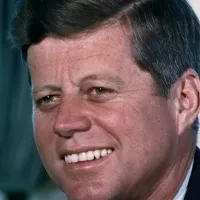
John F Kennedy JFK was the th U S President...
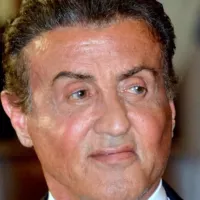
Sylvester Stallone is an acclaimed American actor and filmmaker with...

Radar is a radiodetermination system using radio waves to detect...
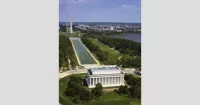
Washington D C is the capital city and federal district...

Los Angeles is the most populous city in California and...
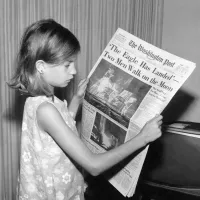
News encompasses information about current events disseminated through various media...
Trending
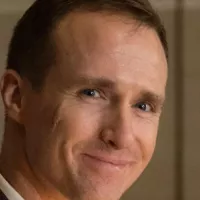
Drew Brees is a former American football quarterback playing seasons in the NFL primarily with the New Orleans Saints He...

7 months ago Logan Paul and Nina Agdal Wedding Fan Invite, WWE Success Fuels Criticism
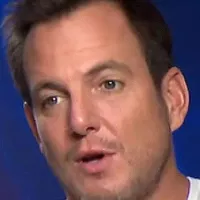
9 months ago Will Arnett sells Beverly Hills mansion for $20.2 million to Paris Hilton's relative.
7 months ago Savannah Guthrie and Craig Melvin Temporarily Replaced on Today Show: Here's Why

7 months ago Harrison Ford and Gene Simmons to be honored by Operation Smile for charity.

4 months ago Celebrating Chris Hemsworth's Birthday: Iconic Roles from Thor to Extraction and Beyond
Popular

Candace Owens is an American conservative political commentator and author...

Tucker Carlson is an American conservative political commentator known for...

XXXTentacion born Jahseh Dwayne Ricardo Onfroy was a controversial yet...

Ilhan Omar is an American politician currently serving as the...

Kashyap Pramod Patel is an American lawyer who became the...

Bill Gates an American businessman and philanthropist revolutionized personal computing...





